These Easy Salmon Bites can be baked, pan-seared, or made using the air fryer. The fish is coated with a flavorful mixture of spices, herbs, and seasonings and then cooked until bright and golden.
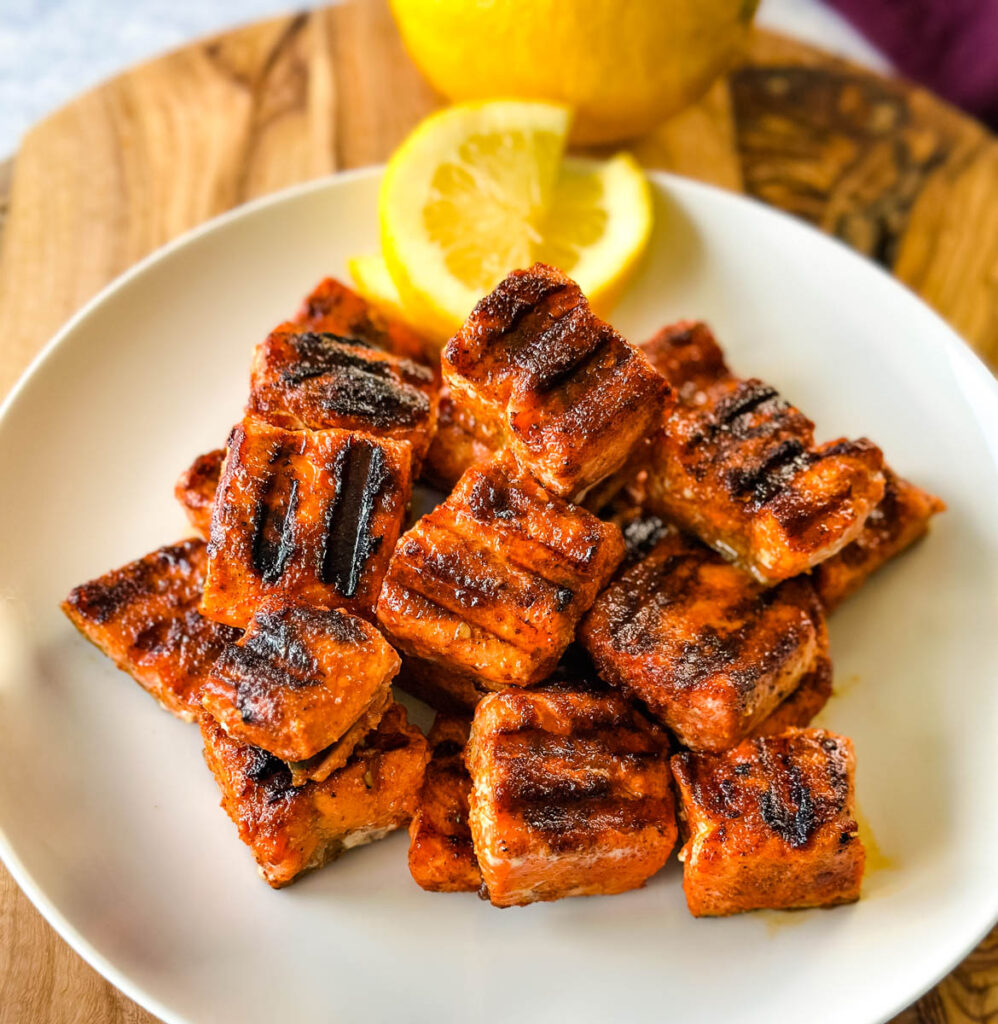
What Type of Fish to Use
The most common types of salmon include:
- Wild and/or Sockeye: Known for its deep red color and rich, oily flavor. It is considered one of the most flavorful types of salmon.
- Atlantic: It is farm raised and has a milder flavor than wild-caught salmon.
- Pink: It is the smallest of the Pacific salmon and has a mild, delicate flavor.
Ultimately, the best type of fresh salmon to use will depend on your personal taste preferences.
Salmon that is sourced from the Atlantic is usually farmed. Farmed means antibiotics and food coloring (to give it a pink color) are used. Wild caught salmon is known for its high nutritional value and delicious flavor. It is also generally higher in beneficial nutrients like omega-3 fatty acids and vitamin D, due to its natural diet and lifestyle.
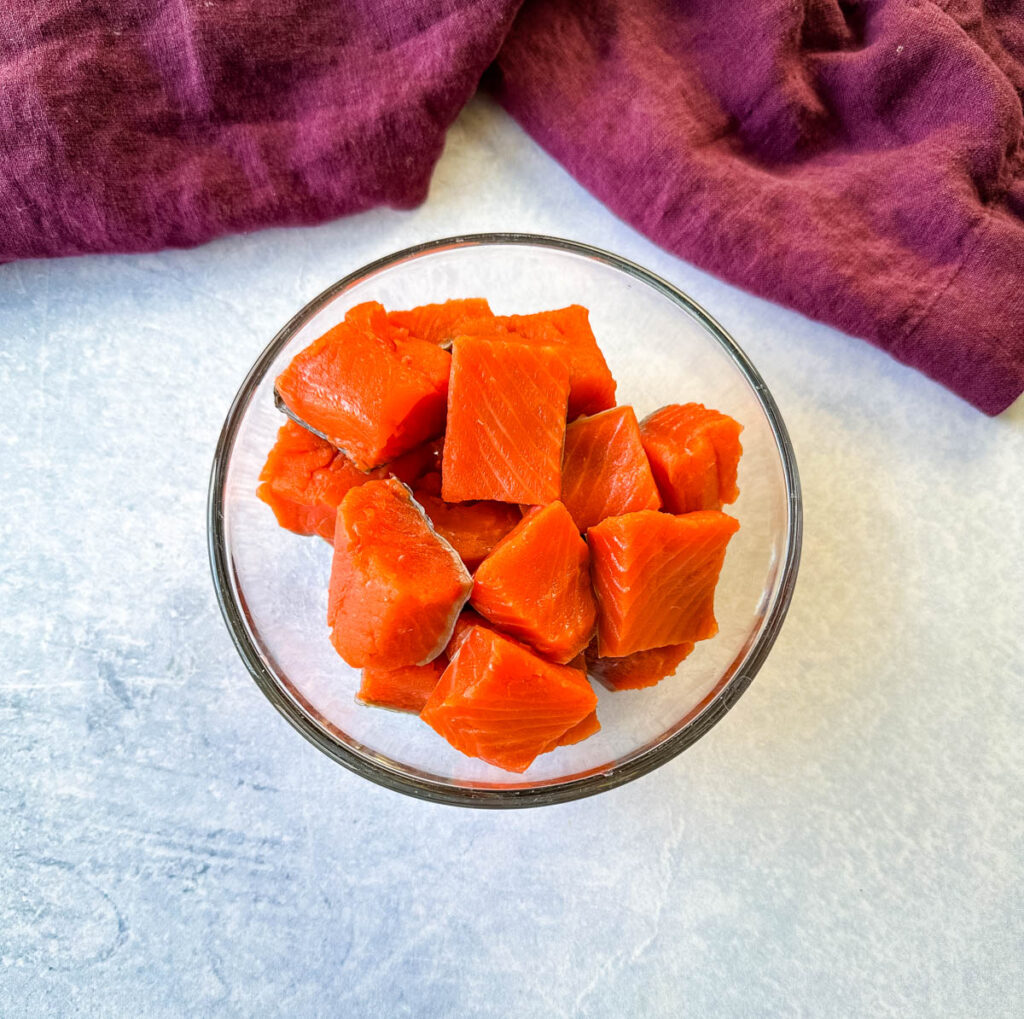
There are many different types of fish that you can use for this recipe. Some popular options include:
- Salmon
- Tuna
- Halibut
- Cod
- Flounder
When choosing fish consider the flavor and texture of the fish. Some fish, such as salmon, have a strong flavor, while others, such as cod, have a more mild flavor. Some fish, such as salmon, are flaky, while others, such as cod, are firm.
How to Cut the Fish
The size will vary depending on your preference and how you plan to use them. The most important thing to consider is to ensure equal sizing, that way the fish cooks evenly and consistently. A common size for salmon bites is around 1 to 2 inches in length and width and about 1/2 inch in thickness.
Slice them however you wish.
How to Season it
I love to use fresh lemon juice along with my Homemade Cajun Seasoning and Rub or my Homemade Blackened Fish and Salmon Seasoning. Here are more options:
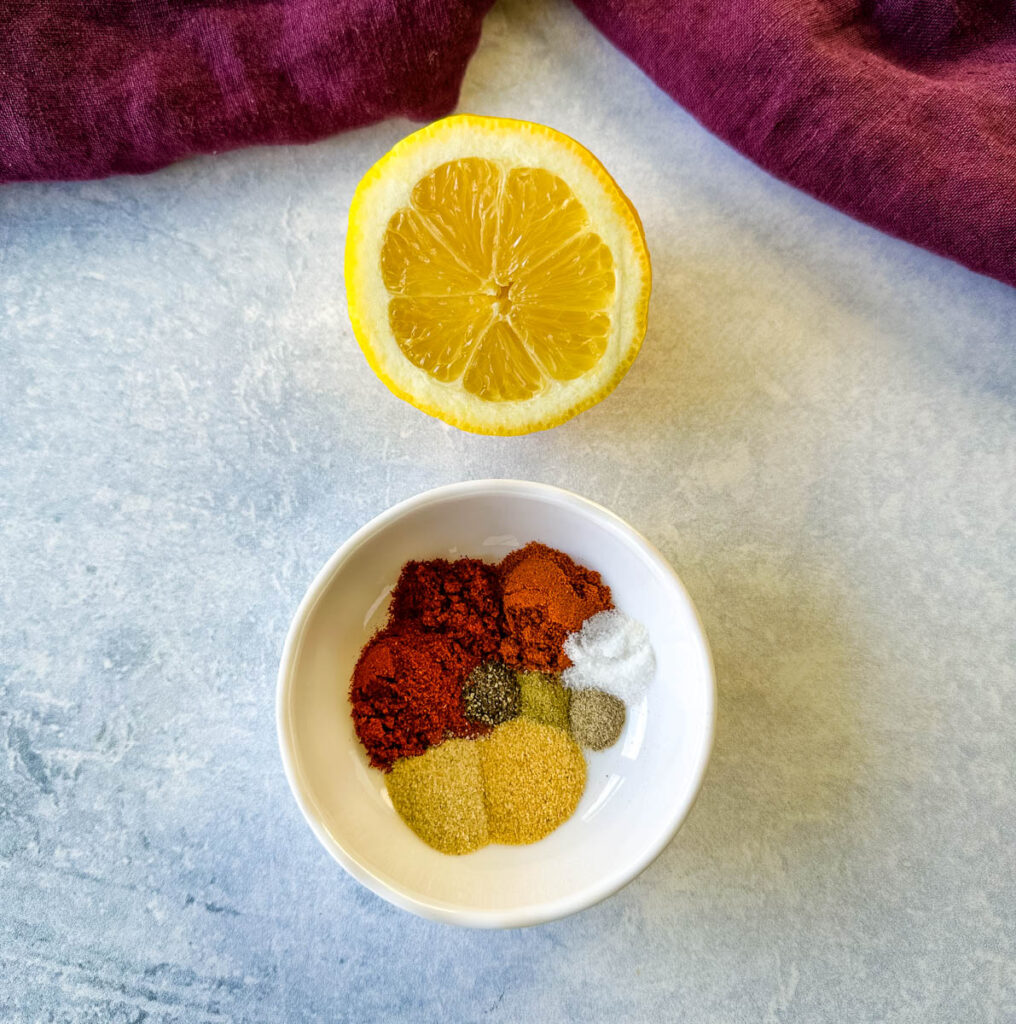
Do You Remove the Skin
Since these are bites, you may want to remove the skin first. I do not. It’s a matter of preference. Cooking salmon with the skin on can help to add flavor and keep the fish moist. The skin will also protect the flesh of the salmon while it cooks, this helps prevent it from over-cooking or drying out.
Cooking salmon with the skin off will make the flesh more delicate and it may dry out more easily without the skin to protect it.
When salmon is cooked with the skin on, it’s super simple to remove it, once cooked. It will usually glide right off. The skin will be crispy and delicious and the flesh will be tender and moist.
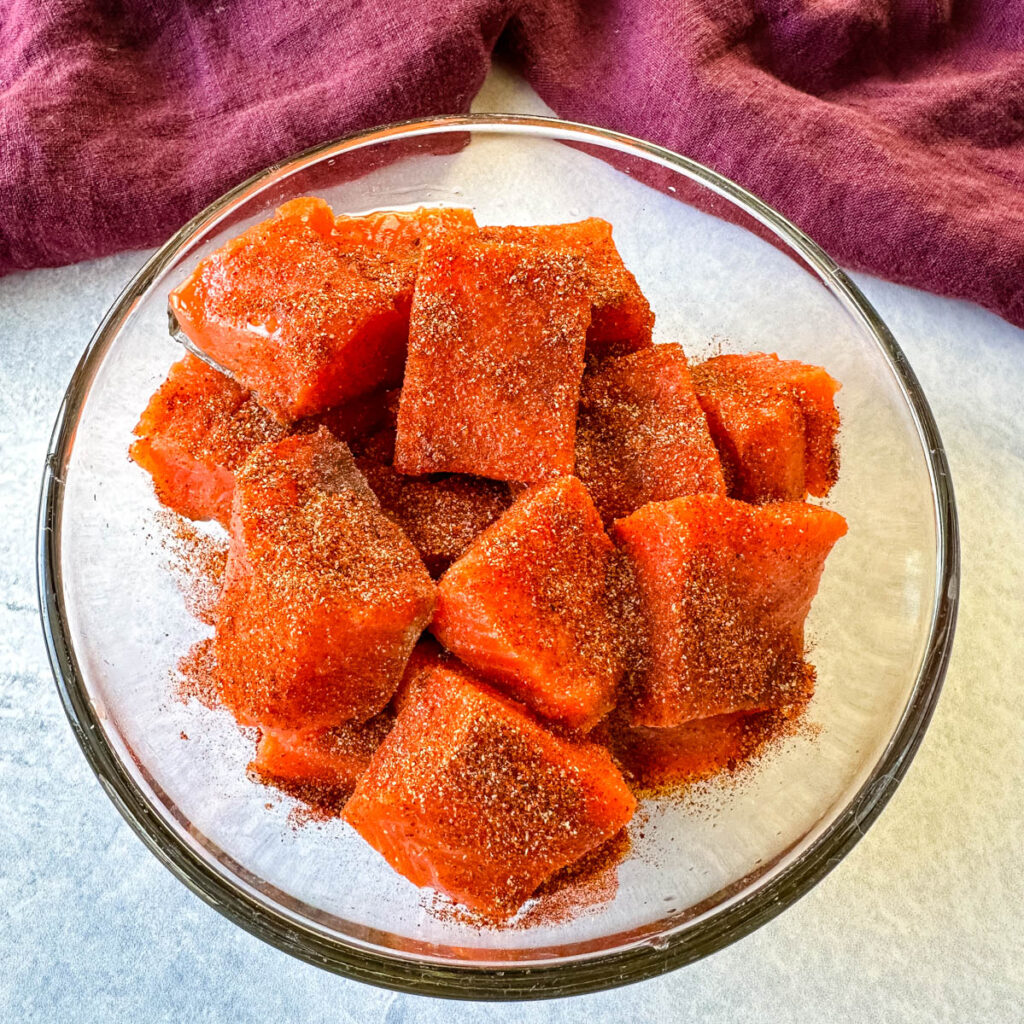
How to Remove Salmon Skin
If you plan to remove the skin, here’s how you do it:
- Place the salmon fillet skin-side down on a cutting board.
- Use a sharp knife to make a shallow cut along the skin, starting at the tail end and working your way toward the head.
- Once you have made a shallow cut, slide the knife along the skin, keeping the blade as close to the skin as possible.
- Keep cutting until you reach the end of the fillet, then carefully lift the skin off with your fingers.
Keep these tips in mind:
- Use a sharp knife. A dull knife will make it more difficult to remove the skin.
- Keep the blade as close to the skin as possible. This will help to prevent you from cutting into the flesh of the salmon.
- Be patient. It may take a few tries to get the hang of removing the skin.
- If you are having trouble, you can try using a fish scaler. A fish scaler is a tool that helps to remove the scales from fish.
How to Make Salmon Bites
Full detailed instructions are below in the recipe card.
- Allow the salmon to come to room temperature and dry the salmon completely using paper towels.
- Drizzle the olive oil and lemon juice over the salmon and then sprinkle the spices throughout. Rub the spices into the salmon and along the edges of the salmon.
- Air fry, bake, or pan sear.
Baked Oven Method
Season the fish with the homemade or store-bought rub and follow the instructions in this Baked Salmon in Parchment Paper recipe. Bake for 10-15 minutes at 425 degrees.
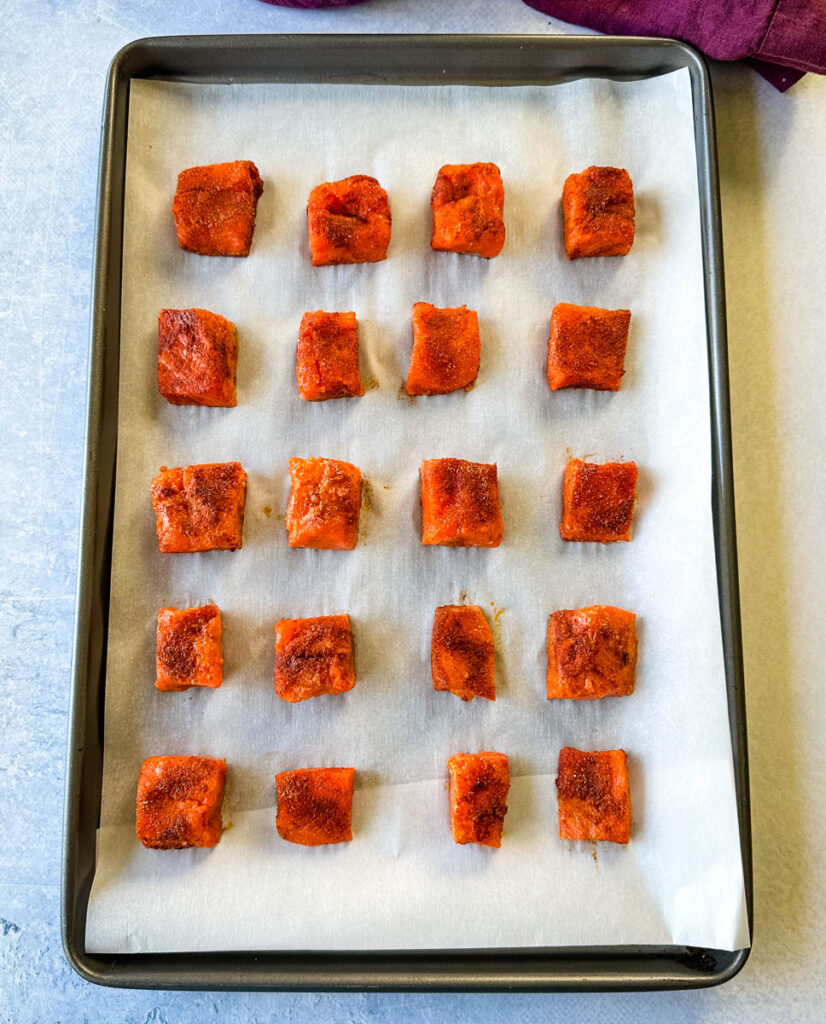
Air Fryer Method
Season the fish with the homemade or store-bought rub and follow the instructions in this Air Fryer Salmon (15-Minute Recipe). Air fry the salmon for 10-12 minutes at 370 degrees.
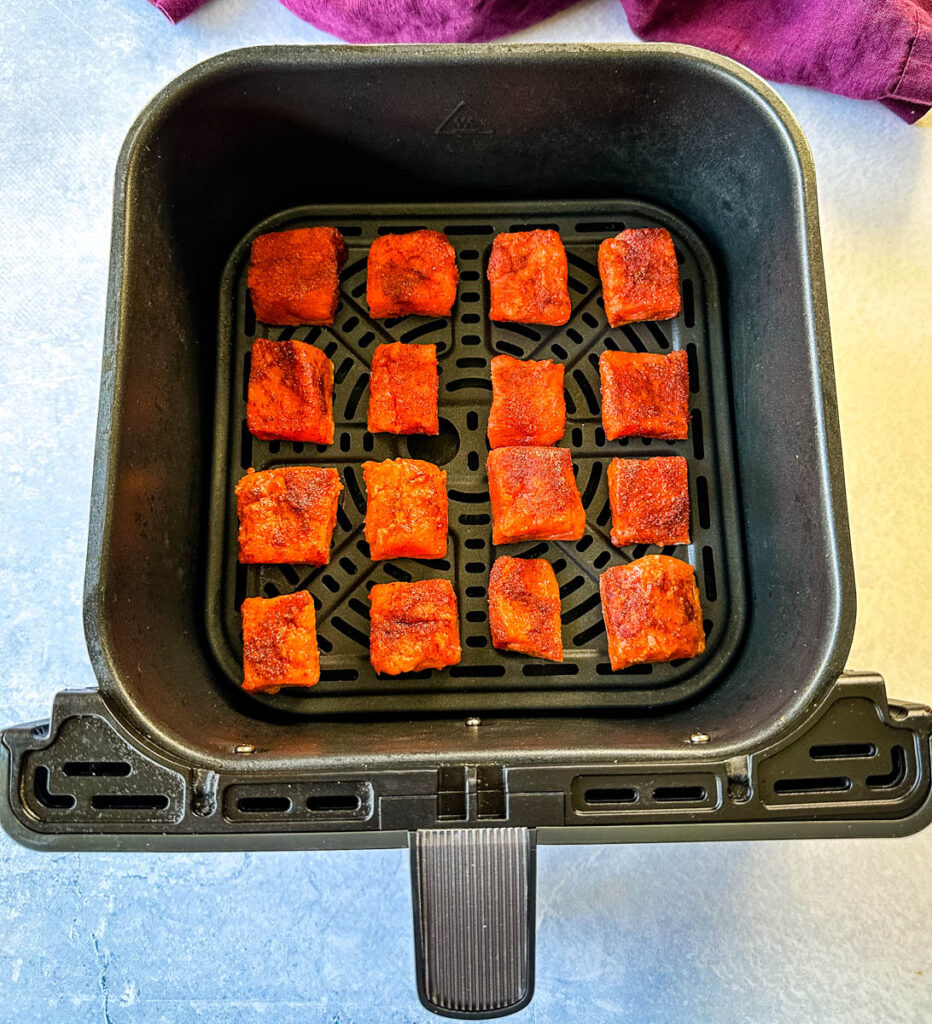
Pan Seared Method
You will need a cast iron skillet, stainless steel frying pan, or a pan that will retain heat well. Cook the salmon at medium-high heat for 7-8 minutes, flipping halfway through.
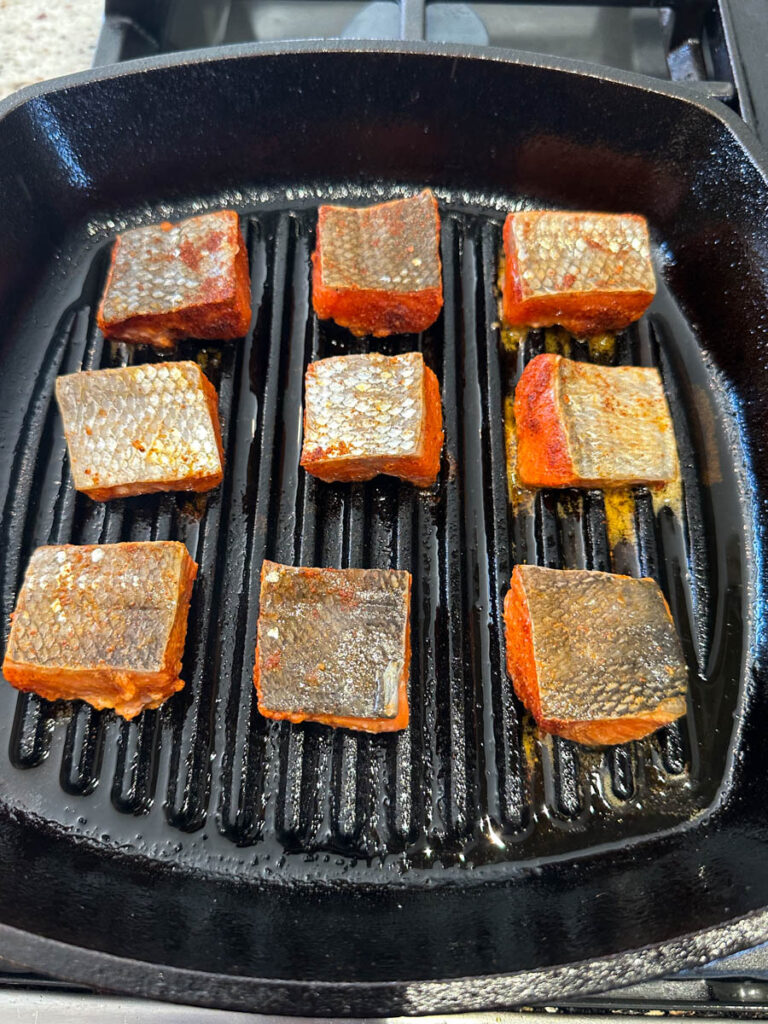
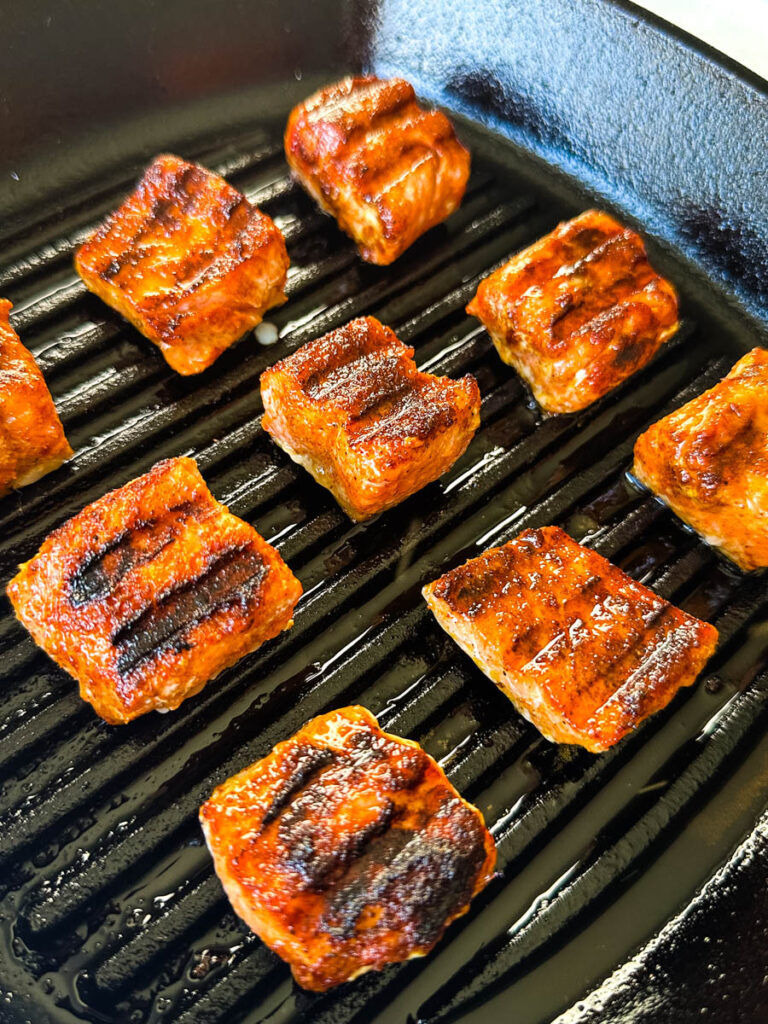
How to Add Breading
For breaded salmon bites, you will need eggs, flour, and bread crumbs. Check out my Fish Fingers recipe and follow the same process for breaded fish.
How to Tell When Salmon Has Finished Cooking
- Temperature: Use a meat thermometer and ensure the fish has reached an internal temperature of 145 degrees. Check the temperature in the thickest part of the fish.
- Appearance and Touch: Perfectly cooked salmon will have a light pink color and will be opaque throughout. The flesh will also start to flake when pressed with a fork.
- It’s important to note that salmon can be cooked to varying degrees of doneness, some people prefer it cooked through while others prefer it medium-rare at 135 degrees. Decide what works for you.
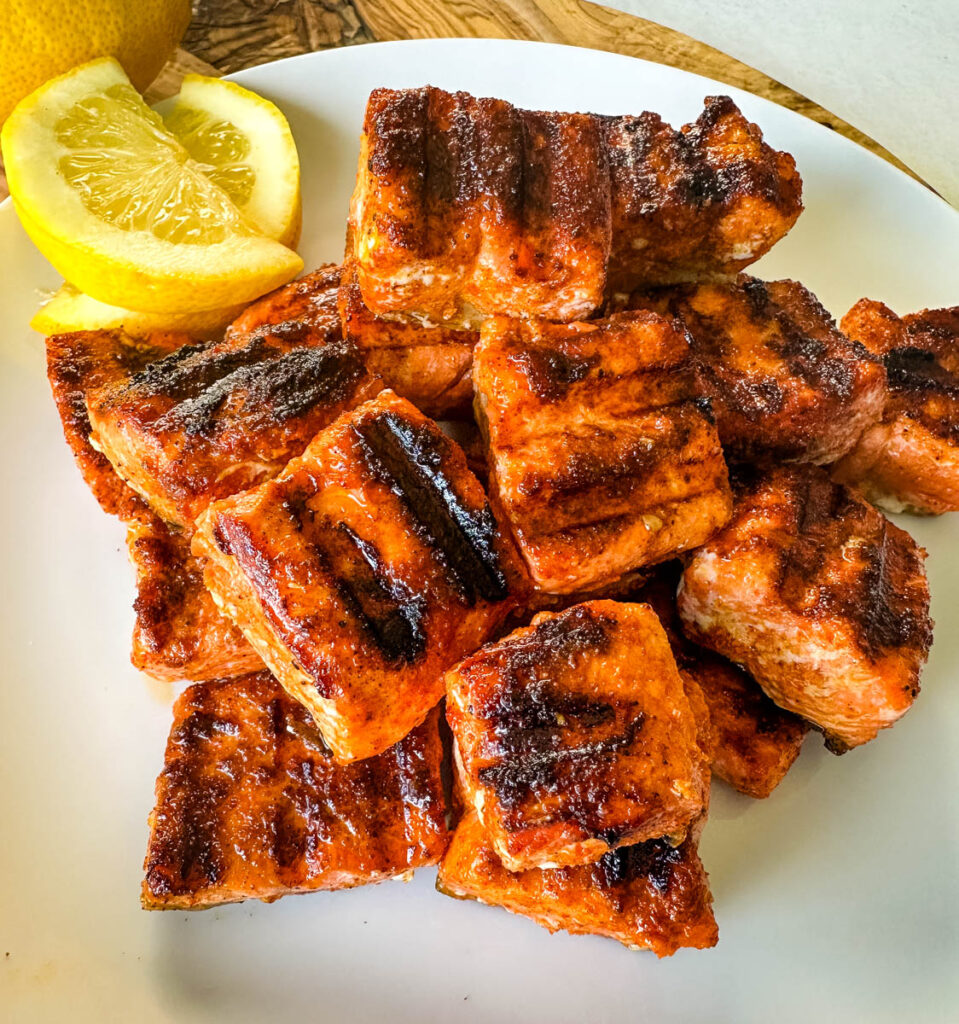
Dry and Overcooked Salmon
Overcooked salmon is dry and has little flavor. Fish (along with meat) will continue to cook when you remove it from heat. This is why it’s important to pay attention to how long the fish cooks.
When the fish is done, it will be a translucent pink in the middle. It should also look flaky. You can check out more tips on How to Tell if Salmon is Overcooked here.
How to Store Leftovers
Store the salmon tightly covered in the fridge for 3-4 days.
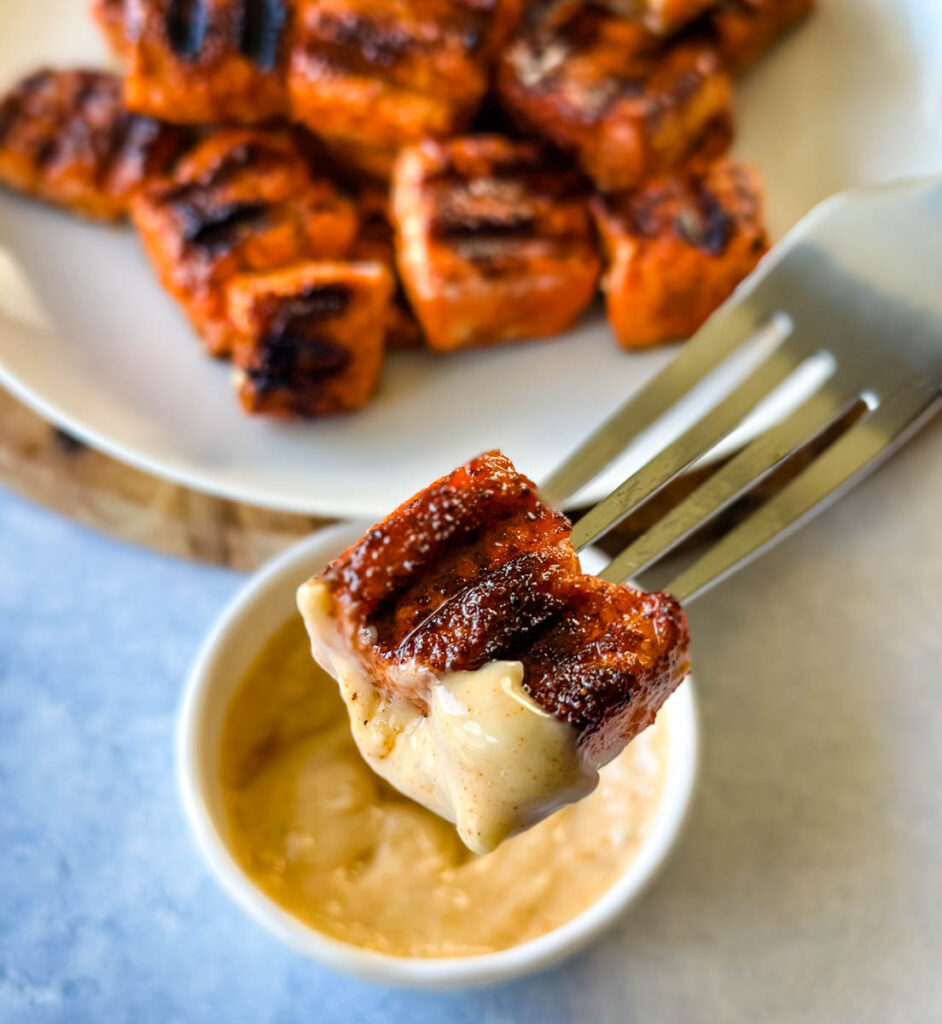
Freezer Tips
Leftovers can be frozen tightly sealed for up to 2 months. Defrost overnight in the fridge.
How to Reheat
I recommend you use the air fryer or oven. If using the oven, place the salmon on a baking sheet lined with parchment paper. Cover the salmon with foil and place it in the oven at 275 degrees until warm.
If using the air fryer, reheat it on 200 degrees for 5-7 minutes or until warm.
If you use the microwave, be swift! Don’t leave it in too long. It will dry out the fish.
Pair With These Recipes
Chipotle Cilantro Lime Rice
Traeger Smoked Corn on the Cob
Broccoli Salad with Bacon and Cheese
Southern Macaroni Salad
Fish and Grits
Fish Fry Seasoning and Breading
Be sure to check out our guide on What Goes Well with Salmon and Best Side Dishes.

More Salmon and Fish Recipes
Baked Salmon Stuffed with Crab Meat
Maple Glazed Salmon
Cedar Plank Grilled Salmon
Smoked Salmon Eggs Benedict
Salmon Fried Rice with Vegetables
Blackened Catfish
Crispy Fish Sandwich
Crispy Catfish Nuggets
Smoked Fish Dip
Drizzle this in our Creamy Southwest Salad Dressing, Creamy Dill Sauce for Salmon or with our Pineapple Mango Salsa.
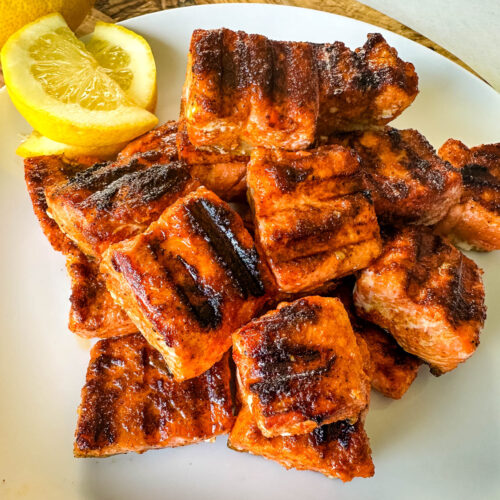
Easy Salmon Bites
Ingredients
- 1 pound raw salmon Sliced into 1 to 2 inch cubes.
- 1 teaspoon olive oil
- 1 teaspoon fresh lemon juice
Cajun Seasoning (Feel Free to use your favorite store bought rub if preferred)
- 1 teaspoon smoked paprika
- 1/2 teaspoon cayenne pepper
- 1/4 teaspoon garlic powder
- 1/4 teaspoon onion powder
- 1/8 teaspoon black pepper
- 1/8 teaspoon white pepper
- 1/8 teaspoon ground oregano
- salt to taste
Instructions
- Allow the salmon to come to room temperature and dry the salmon completely using paper towels.
- Drizzle the olive oil and lemon juice over the salmon and then sprinkle the spices throughout. Rub the spices into the salmon and along the edges of the salmon.
Air Fryer Salmon
- Air fry the salmon for 10-12 minutes at 370 degrees. Mine was ready right at 10 minutes. Use a meat thermometer and test that the inside of the salmon has reached 145 degrees. Cool before serving.
Pan Seared Salmon
- Place a cast iron or stainless steel skillet on medium-high heat. Spray or drizzle the skillet with olive oil. Be sure the skillet is nicely coated. This will prevent the salmon from sticking to the pan. When the pan is hot, add the salmon to the pan with the skin side up.
- Allow the salmon to cook for 4 minutes. Do not move the salmon after you have placed it in the skillet. Monitor the sides of the salmon to determine the perfect time to flip. When the color of the side of the salmon has lightened about 3/4ths of the way up, it's time to flip. This usually only takes 3-4 minutes. Flip the salmon.
- Cook skin side down for 4 minutes. Remove the salmon from the pan. Cool before serving.
Baked Salmon
- Preheat oven to 425 degrees.
- Line a baking sheet (mine was 9×13) with parchment paper and add the salmon. Cover with another piece of parchment paper. Bake for 8 minutes.
- Remove the parchment paper and bake for another 2-5 minutes. Use a meat thermometer and ensure the fish has reached an internal temperature of 145 degrees. Check the temperature in the thickest part of the fish. Allow the salmon to cool before serving.
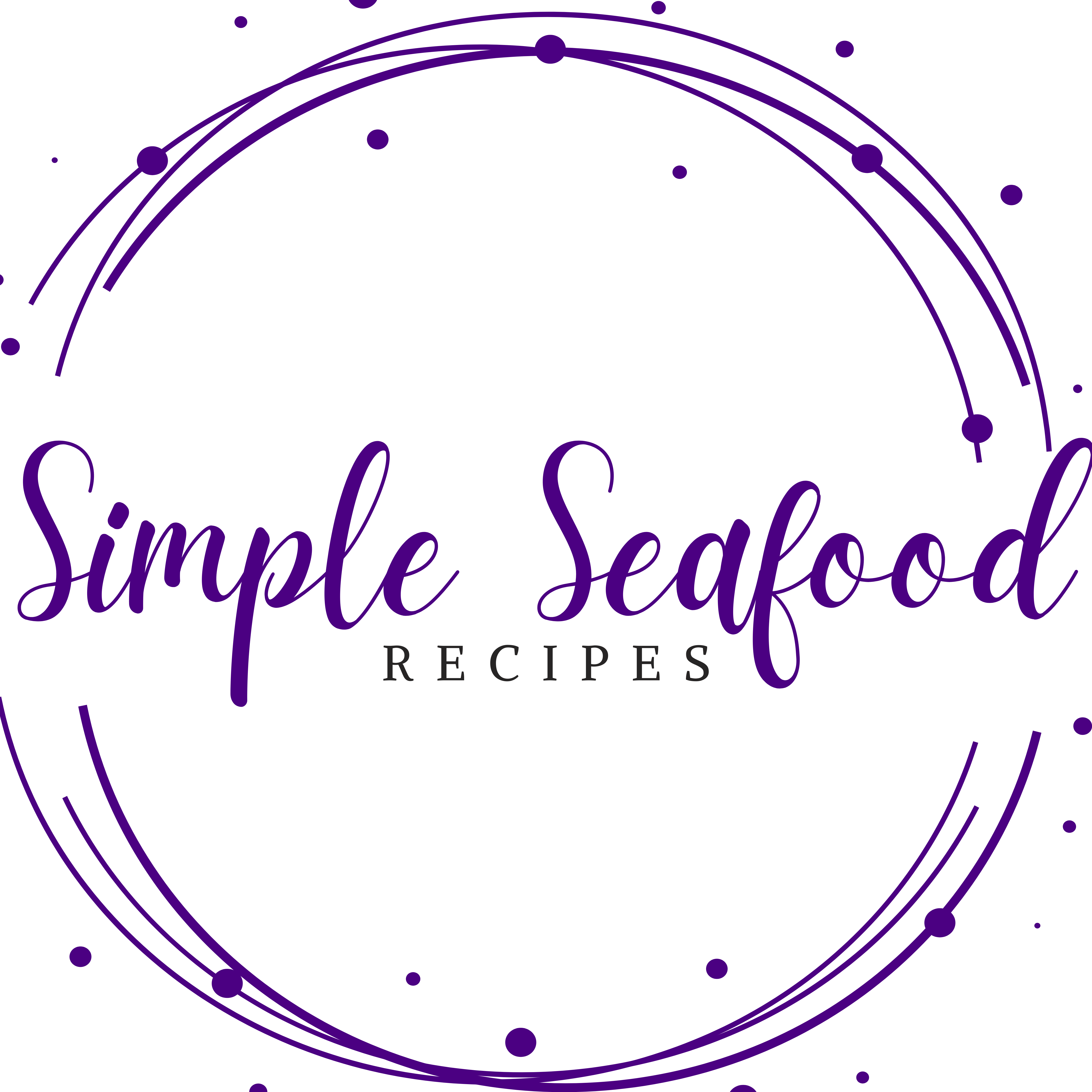
KfnqDuxw
Wednesday 14th of May 2025
1
Sydney
Wednesday 12th of April 2023
An easy quick week night meal! The Cajun seasoning is phenomenal and will definitely make this again per usual
Brandi Crawford
Wednesday 12th of April 2023
Thank you! Glad to hear it!
Ashley
Wednesday 12th of April 2023
This is one of the most delicious and easy meal prep items I’ve ever made! So yummy by themselves or on a salad.
Brandi Crawford
Wednesday 12th of April 2023
Yay! Glad you enjoyed them!